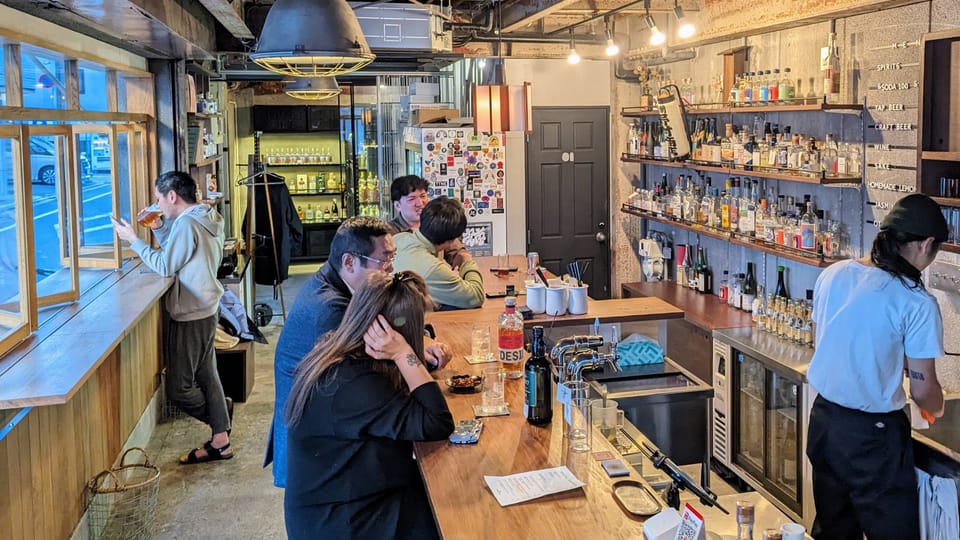On Taste and Congruence

Making the right choices isn’t enough to have good taste: There also must be harmony between the choices
Hannah Arendt called taste “the chief cultural activity,” but she’s getting ahead of herself. Before taste, there is choice.
Since at least World War II, consumer choice has been the primary action for individuals to engage in culture. Everyone has basic needs — food, drink, housing, clothing, transportation, entertainment, etc. — and modern economies provide individuals with enough disposable income and product variation to make their own choices within each of these categories. (Not to mention all of the “free” choices we have for our identities, such as, what slang to use.) An individual's social position, of course, places limits on their potential choices, not just in terms of spending power, but also, the degree to which they're attached to unconscious predispositions and community norms. The ultra-rich can buy anything — and get away with buying anything.
Whether actively or passively choosing, every individual’s choices bundle together to form their taste, which is an abstract measure we use to understand the individual's identity and make predictions about their future choices. We tend to understand tastes as a gestalt sensibility — a “feel” that the choices express. People in similar social positions tend to have similar tastes (so-called “taste worlds”), and the social hierarchy elevates some tastes as “good” and disparages others as “bad."
Inherently, we could never judge someone’s taste on a single choice. Every person embodies 100s of choices, and we incorporate all of this information in understanding the person. In the times when the choices all work together to clarify the sensibility, this is known as congruence.
Without congruence, there cannot be good taste. (And a lot of bad taste stems from incongruence.) Even when someone has put together a “surprising mix,” they have achieved their own original congruence on some vector or otherwise it would be a "shocking mix."

Individuals either reach or don't reach congruence in their lifestyle choices, but congruence may be even more important for commercial establishments.
A few weeks ago, I was sitting at the bar counter of Nomura Shoten in Tokyo’s emerging Kuramae area, and admiring how the proprietor had achieved congruence through a long list of extremely thoughtful choices. Every bar must make choices across a wide spectrum, including:
• The location
• The name
• The logo
• The exterior design
• The interior design, including materials used
• The lighting
• The selection of liquors, especially with beer and wine
• The food menu
• The music
• The staff
• The staff’s clothing
• The glasses for serving beverages
• The vessels for the free water
• The coasters
• The shape of the beer taps
• The light switches
• The other customers, etc.
The owner of Nomura Shoten not only made tasteful choices across every single one of these categories, but his choices all work together to create a distinct sensibility, which I'd summarize as "a contemporary take on a traditional neighborhood Japanese tachinomi specializing in craft beer, gin, and other spirits for inquisitive customers." A few wrong choices would have made the bar too bland or too trendy. Nomura Shoten does a good job matching the sento bath across the street by opting for a rustic and worn-in architectural style rather than a generic stark-white AirSpace. The staff uniform of sleek short-sleeved jackets connect to Japanese tradition through their moss green color.
A common compliment about Japan is that “establishments really care about the details,” and this is true, but what they really mean is, “Establishments really care about how everything works together, down to the smallest details.”
After living in Tokyo for a long time, you start to take these levels of congruence for granted. I only became more sensitive to it after visiting Shanghai a few months ago. Shanghai is fascinating, thanks to its unique merging of dynamic Chinese culture into an endless number of heritage European-style buildings. Even in the last seven years of traveling there, it is palpable how economic growth has encouraged many young proprietors to create new stores and bars that appeal to their peers. (Young is the key word here. I stumbled into a Prada “very important customer” event for patrons who had surely spent tens of thousands on the brand in a single year, and the average attendee seemed to be a 24 year-old woman.)
But where Shanghai shops and bars are starting to make the right individual choices, they haven’t quite achieved expert levels of congruence. There are beautiful historical bars — that serve bland cocktails and play 1980s American Top 40 as background music. Streetwear stores skillfully borrow the conventions of Ura-Harajuku interior design — and blast schmaltzy J-Pop. This is not meant as a permanent indictment, but simply noting a marker in China's stylistic evolution. There are already signs of progress. Pam Hong and William Zhu’s store FRAW in the French Concession is an inspiring outlier: a well-designed shop inside of an old apartment offering a perfect product mix of imported brands for professional women working in creative fields. The fact that other stores are copying their stock lists and interior design is a good sign that congruence is infectious.

Essays on taste tend to become self-help columns — focusing on how individuals can make better choices to ensure future personal success. (I just wrote one of these for Popeye’s next issue.) So yes, carry on in your own march towards congruence, but I’m much more interested in the resulting macro effects of this individual pursuit.
In his 1908 essay “On Adornment,” pioneering sociologist Georg Simmel notes that individuals dress up for self-motivated reasons — attempting to establish “an increased significance” — yet in doing so, they provide “visual delight” to others. Adornment, he claims, is ultimately “altruistic”: “its pleasure is designed for the others, since its owner can enjoy it only insofar as he mirrors himself in them.” This sets up the core tension within contemporary dress codes: They infringe on the individual's right to be a differently-dressed slob, but are necessary for creating an atmosphere of heightened aesthetics. A formal party is different than hanging out with the same friends at the park, because everyone wearing black tie marks it off as a special occasion.
There is a long-standing free-market complaint about Japan’s "over-investment" in public infrastructure, but in recent years, I’ve realized how clean and reliable subways, sidewalks, and public roads don't just make the city more livable, but more equitable, as well. Everyone can enjoy good public transportation, no matter their socioeconomic background (and many wealthy people ride the subway here). The train station near the San'ya “slum” is just as clean as the train station in posh Omotesando.
I would argue that the high standard for congruence among Japanese establishments plays a similar role in improving the quality of public life. Yes, tasteful establishments cater towards wealthier patrons, but they are key players in creating the city’s overall appeal, as most shop owners are working hard to provide “visual delight.” Japanese proprietors may have both individual and social motivators for pushing towards these high levels of congruence, but it is replicable everywhere for all kinds of taste. And when more individuals or businesses achieve congruence, our world becomes more delightful.
